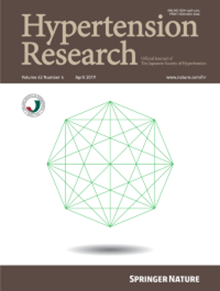深度学习帮助早期检测心电图信号中由高血压引发的心脏变化。
IF 4.6
2区 医学
Q1 PERIPHERAL VASCULAR DISEASE
引用次数: 0
摘要
动脉高血压是心血管疾病的主要风险因素。虽然心脏超声是诊断高血压引起的心脏变化的典型方法,但它往往无法发现早期细微的结构变化。心电图(ECG)代表心肌的电活动,受心脏结构变化的影响。探讨心电图能否捕捉到高血压引起的心脏变化的细微信号至关重要。然而,读取心电图记录非常复杂,而且有些信号过于微妙,心脏科医生无法通过肉眼捕捉到。在这项研究中,我们设计了一个深度学习模型,通过心电图信号预测高血压,进而识别与高血压相关的心电图片段。我们从厦门大学附属第一医院收集了 210120 份 10 秒 12 导联心电图(使用 FUKUDA 生产的 FX-8322)和 812 份心电图(使用 NALONG 生产的 RAGE-12)。我们提出了一个深度学习框架,包括一个多分支、多尺度 LSTM 神经网络 MML-Net,用于评估心电信号检测高血压的潜力;以及一个面向心电图的波对齐人工智能解释管道 ECG-XAI,用于识别与高血压相关的心电图片段。MML-Net 在测试中达到了 82% 的召回率和 87% 的精确率,在独立测试中达到了 80% 的召回率和 82% 的精确率。相比之下,经验丰富的临床心脏病专家通过目测通常能获得 30% 到 50% 的召回率。实验证明,心电图信号对高血压引起的心脏结构轻微变化非常敏感。ECG-XAI 检测出 R 波和 P 波是与高血压相关的心电图片段。所提出的框架有望促进心脏变化的早期诊断。本文章由计算机程序翻译,如有差异,请以英文原文为准。

Deep learning assists early-detection of hypertension-mediated heart change on ECG signals
Arterial hypertension is a major risk factor for cardiovascular diseases. While cardiac ultrasound is a typical way to diagnose hypertension-mediated heart change, it often fails to detect early subtle structural changes. Electrocardiogram(ECG) represents electrical activity of heart muscle, affected by the changes in heart’s structure. It is crucial to explore whether ECG can capture slight signals of hypertension-mediated heart change. However, reading ECG records is complex and some signals are too subtle to be captured by cardiologist’s visual inspection. In this study, we designed a deep learning model to predict hypertension on ECG signals and then to identify hypertension-associated ECG segments. From The First Affiliated Hospital of Xiamen University, we collected 210,120 10-s 12-lead ECGs using the FX-8322 manufactured by FUKUDA and 812 ECGs using the RAGE-12 manufactured by NALONG. We proposed a deep learning framework, including MML-Net, a multi-branch, multi-scale LSTM neural network to evaluate the potential of ECG signals to detect hypertension, and ECG-XAI, an ECG-oriented wave-alignment AI explanation pipeline to identify hypertension-associated ECG segments. MML-Net achieved an 82% recall and an 87% precision in the testing, and an 80% recall and an 82% precision in the independent testing. In contrast, experienced clinical cardiologists typically attain recall rates ranging from 30 to 50% by visual inspection. The experiments demonstrate that ECG signals are sensitive to slight changes in heart structure caused by hypertension. ECG-XAI detects that R-wave and P-wave are the hypertension-associated ECG segments. The proposed framework has the potential to facilitate early diagnosis of heart change.
求助全文
通过发布文献求助,成功后即可免费获取论文全文。
去求助
来源期刊

Hypertension Research
医学-外周血管病
CiteScore
7.40
自引率
16.70%
发文量
249
审稿时长
3-8 weeks
期刊介绍:
Hypertension Research is the official publication of the Japanese Society of Hypertension. The journal publishes papers reporting original clinical and experimental research that contribute to the advancement of knowledge in the field of hypertension and related cardiovascular diseases. The journal publishes Review Articles, Articles, Correspondence and Comments.
 求助内容:
求助内容: 应助结果提醒方式:
应助结果提醒方式:


